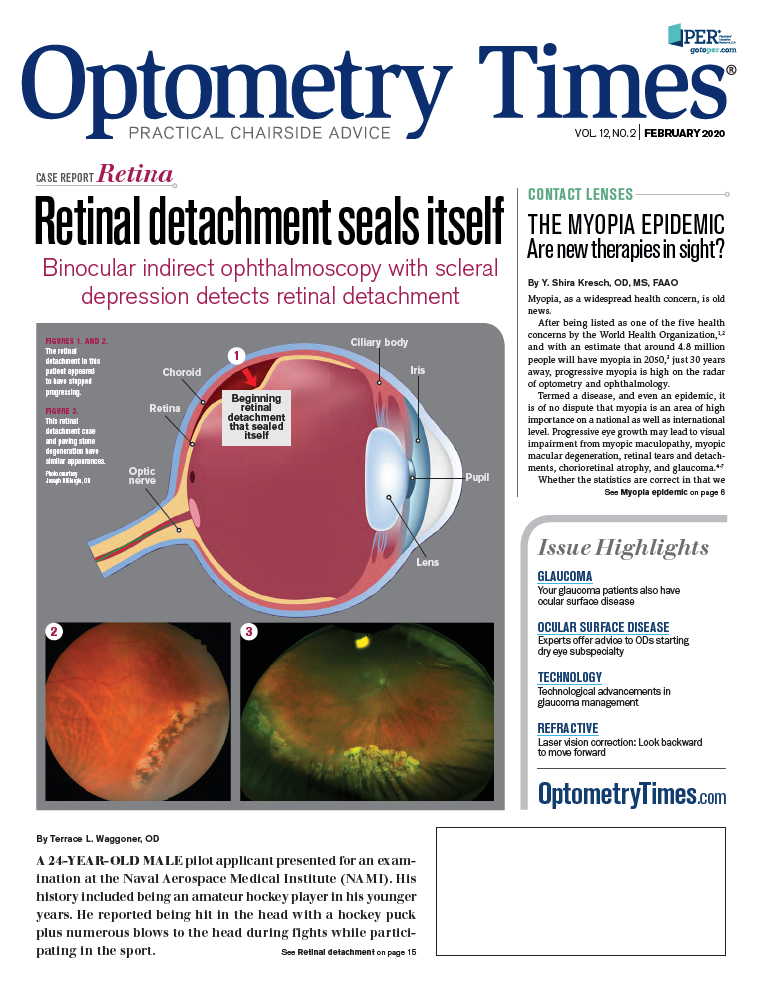Glaucoma facts: Essential perspectives for long-term management
More knowledge helps dispel myths in diagnosing and treating this sight-stealing disease.

ODs should take a measured approach to glaucoma management that considers the big picture, treat the disease carefully, assess all known risk factors, interpret results carefully, and more than anything else, use clinical evidence as a guide.
There is a commonly held but false belief within the general public that glaucoma only affects individuals over the age of 50. Experience has taught optometrists (ODs) to spot that myth from a mile away, but other untruths catch even the most practiced ODs off guard.
Edward Chu, OD, FAAO, and David Hicks, OD, FAAO, explored glaucoma facts and myths with research and evidence-based theories for glaucoma management during their lecture at the American Academy of Optometry annual meeting in Orlando.
Related: Year in review of optometric advancements
Assessing and diagnosing
When assessing for glaucoma, it is important to keep in mind that while optic nerve size and shape matter, they do not indicate an increased risk for glaucoma, and normal variations in disc size can explain normal variations in cup-to-disc (C/D) ratios. Asymmetry in C/D values doesn’t necessarily indicate glaucoma either, Dr. Chu says.
When it comes to diagnosing glaucoma itself, it is important to note that glaucoma definitions fall on a spectrum.
According to Dr. Hicks, there are many ways to define and diagnose glaucoma. Optical coherence tomography (OCT) imaging, visual fields, and physical inspections of the optic nerve heads all contribute to variations.
Most glaucoma cases detected by ODs fall within the asymptomatic disease category in which progression can be detected by imaging tools.
Related: ODs: Redefine your role in glaucoma collaborative care
ODs need to understand a range of conditions to make the correct glaucoma assessment. For example, traumatic glaucoma is not as common as secondary glaucomas and features two peak incidences:
– Within one year of the initial trauma
– More than 10 years after the initial trauma
Related: Look at more than the optic nerve head in glaucoma patients
Risk factors
glaucoma is complex with a myriad of risk factors, though some are less known than others.
Research suggests that obstructive sleep apnea is a risk factor r glaucoma. One study showed that 47.6 percent of patients with primary open-angle glaucoma had sleep-disordered breathing.1
Perhaps surprisingly, research on erectile dysfunction shows a link to open-angle glaucoma.2
These lesser-known risk factors underscore the need for ODs to take extensive case histories from patients during their initial evaluation before making glaucoma care decisions.
Related: Your glaucoma patients also have ocular surface disease
Visual field facts
ODs are well aware of visual fields’ varying results. However, false positives are a particular point of concern because they have a significant effect on visual field reliability. Patients may worry that they are underperforming visually. This could cause them to overcompensate and become trigger happy, leading to skewed test results.
This is just one contributing factor to another unfortunate glaucoma fact: determining progression through visual field tests is a challenge. Aside from reliability and variability concerns, rates of visual field change are often inconsistent.
As a result, available classification systems, event analyses, and trend analyses, are used to determine progression.
Clinicians must use their own judgement and apply evidenced-based approaches to their decisions, Dr. Hicks says.
Related: ODs must raise awareness about glaucoma
Value of retinal fibers and ganglion cells
A patient’s retinal nerve fiber layer (RNFL) and ganglion cells can prevent data on glaucoma progression. For example, asymmetry in RNFL is common in glaucoma patients; however, increased age itself is not associated with increased RNFL asymmetry.
Furthermore, research indicates that ganglion cell analyses can detect glaucoma. Evidence shows that retinal ganglion cell counts are better than average RNFL thickness when detecting glaucoma with minimal visual field loss.3
And beyond that, the minimum ganglion cell inner plexiform layer (GCIPL) is th best parameter for early perimetric glaucoma detection,4 Dr. Hicks says.
Related: Technological advancements in glaucoma management
Related: Know what common glaucoma mistakes to avoid
Glaucoma is manageable with right approach
When it comes to glaucoma, diagnosis, management and follow-up can be difficult for ODs to assess. There are a myriad of reasons for this but one that makes it particularly difficult, maybe moreso than the rest, is the fact that glaucoma is a 24-hour disease. Additionally, when it comes to the challenge of patient compliance, intraocular pressure (IOP) presents difficulties because it is subject to considerable fluctuation throughout the day.
In fact, most glaucoma medications do not work well to curb IOP spikes overnight, Dr. Chu says.
Because of this, ODs should use 24-hour IOP monitoring tools with their patients. In the absence of these tools, they’ll need to rely on isolated IOP measurements. But as Dr. Chu points out, ODs must exercise caution when extrapolating glaucoma diagnoses and treatment plans from isolated IOP measurements.
References:
1. Onen SH, Mouriaux F, Berramdane L, Dascotte JC, Kulik JF, Rouland JF. High prevalence of sleep-disordered breathing in patients with primary open-angle glaucoma. Acta Ophthalmol Scand. 2000 Dec;78(6):638-41.
2. Chung SD, Hu CC, Ho JD, Keller JJ, Wang TJ, Lin HC. Open-angle glaucoma and the risk of erectile dysfunction: a
population-based case-control study. Ophthalmology. 2012 Feb;119(2):289-93.
3. Sihota R, Gupta S, Angmo D. Evaluation of macular ganglion cell analysis compared to retinal nerve fiber layer thickness for
pre-perimetric glaucoma diagnosis. Indian J Ophthalmol. 2018 Apr;66(4):491-493.
4. Xu XY, Lai KB, Xiao H, Lin YQ, Guo XX, Liu X. Comparisons of ganglion cell-inner plexiform layer loss patterns and its diagnostic performance between normal tension glaucoma and primary open angle glaucoma: a detailed, severity-based study. Int J Ophthalmol. 2020 Jan 18;13(1):71-78.

Newsletter
Want more insights like this? Subscribe to Optometry Times and get clinical pearls and practice tips delivered straight to your inbox.